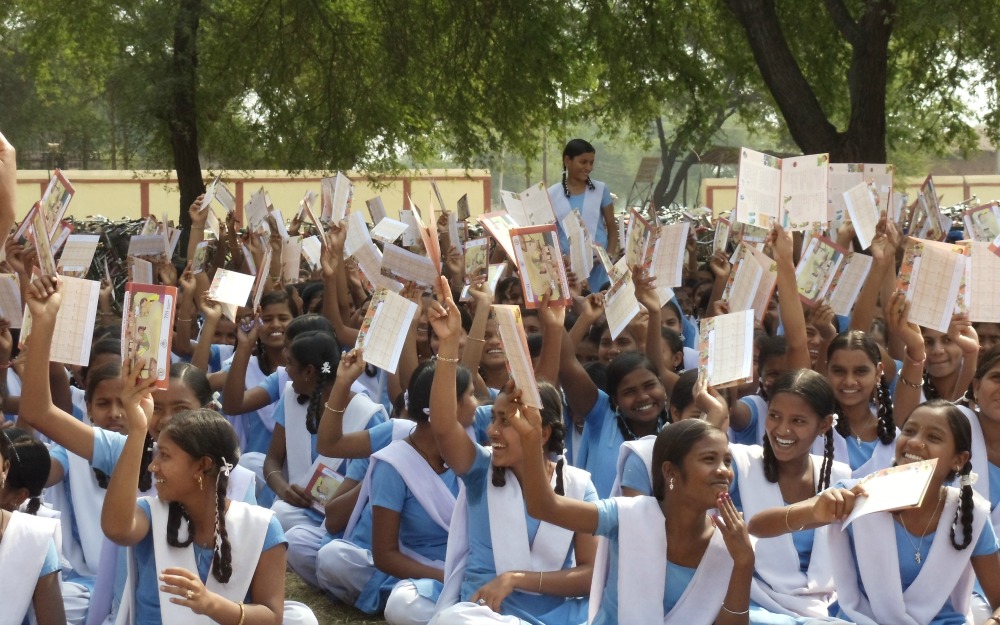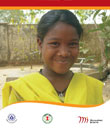Field Stories
Meet a health and wellness messenger providing peer support in India
March 20, 2025
WP_Term Object
(
[term_id] => 49
[name] => Field Stories
[slug] => all-field-stories
[term_group] => 0
[term_taxonomy_id] => 49
[taxonomy] => news-category
[description] => Discover the personal stories of people whose lives have been impacted by better nutrition, and those working tirelessly to deliver it.
[parent] => 0
[count] => 180
[filter] => raw
)
India District administrators’ innovativeness channels efforts to reduce adolescent anaemia
In 2010, the prevalence of anaemia among adolescent girls in Chhattisgarh was at 85 percent among school-going girls and 89 percent among out-of-school girls.
Posted on November 18, 2012


In November 2011, Ankit Anand, District Collector of the Jashpur District at Chhattisgarh, India, was on a supervisory visit to one of the schools in the district.
He saw a young girl, about 15 years of age, walking towards her classroom. Her gait was slow and tired, and she looked visibly pale. Once his round was over, he went to the girl’s classroom and inquired about the girl he’d seen.
The teacher informed him that Seema (name changed) was a bright girl, but, for unknown reasons, her grades were dropping. She said Seema may not be looking good because she was unhappy about her reduced grades. But the District Collector wasn’t convinced – it wasn’t just grades. And he wasn’t wrong. After a meeting with a representative from the Micronutrient Initiative’s (MI) about our iron and folic acid (IFA) supplementation program in Chhattisgarh, he knew why Seema looked so ashen.
In 2010, the prevalence of anaemia among adolescent girls in Chhattisgarh was at 85 percent among school-going girls and 89 percent among out-of-school girls.
These figures were appalling by any standards. More than half of all girls in Chhattisgarh are married before the age of 18. Anaemia, in combination with early marriage, puts adolescent girls at increased risk of developing complications due to pregnancy, high risk of maternal mortality and delivering a low-birth-weight baby. Iron-deficiency can also result in poor cognitive skills, resulting in poor performance in school and at work.
To address iron-deficiency anaemia among adolescent girls in Chhattisgarh, MI collaborated with the Departments of Women and Child Development, Education and Tribal Development, to implement a simple and cost effective intervention.
A single, weekly dose of IFA was administered to more than 95,000 adolescent girls; those in Class 9 to 12 in 424 schools across the state, and 11-18-year-old out-of-school girls at 6,832 Anganwadi Centres.
This pilot project was implemented in three districts of Chhattisgarh, Raigarh, Jashpur and Dhamtari, starting in February 2010.
In November 2011, the District Collector met with MI to assess the outcomes of an interim monitoring review indicating gaps in program implementation.
MI’s concern was that the out-of-school girls, constituting about 30 percent of recipients, were perhaps not receiving the IFA tablet at the Anganwadi Centre or not being sufficiently counselled by the frontline workers.
The District Collector felt the poor results were perhaps indicative that the larger group, the 70 percent school-going girls, were not being reached effectively. Seema was one of them.
“I will not let this effort end. Women’s health is a priority,” said Ankit Anand. “I am committed to ensuring every girl in Chhattisgarh is provided with an equitable opportunity to become healthy by ensuring that her need for essential vitamins and minerals is met during her reproductive years, during pregnancy and after birth.”
He suggested using a simple and objective form that could be circulated among the school girls through existing education systems to collate feedback on the program. The results established the problem — school teachers and peer guides who had been identified and trained in administering the supplements once a week on Tuesdays had not been doing so regularly.
They were also not following the guidelines for counselling girls on side effects or encouraging them to adhere to the regimen. In some schools, essential communication materials, such as


information booklets and jigsaw puzzles that were supposed to be used to generate awareness among the girls on various aspects of anaemia, were also not being used on a regular basis.
Based on the feedback, poor performing blocks, as well as particular schools in those blocks, were identified for a boost in programming. A district level review meeting was organized, chaired by the Assistant Commissioner (district head of the Tribal Development Department) where results were shared with the nodal teachers from all the schools, and the reasons for poor performance were explored. Regular district level meetings with school principals were used as forums to reorient them about various aspects of anaemia and address their concerns regarding problems faced implementing the program.
An endline survey conducted to measure the impact of the project showed much more promising results. Post intervention, anaemia prevalence in the three project districts of Chhattisgarh had reduced by 14 percent and 7 percent in school-going and out-of-school adolescent girls respectively.
The results also demonstrated improved awareness among girls, their teachers and service providers on anaemia. MI is grateful to dynamic bureaucrats such as the District Collector of Jashpur whose novel suggestion served as a catalyst to achieve these results.
MI’s adolescent weekly iron and folic acid supplementation program has been included in the National Rural Health Mission Project Implementation Plan for 2012-13 for the state. This has been approved by the Government of India and MI is now working closely with its government partners on scaling up this important program.